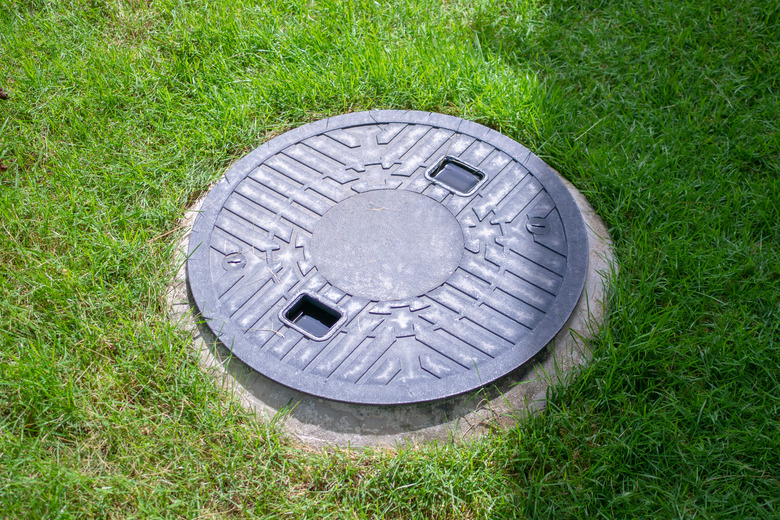How Does A Septic System And Dosing System Work?
We may receive a commission on purchases made from links.
A septic system receives wastewater from a home and removes harmful agents, such as bacteria, viruses and hazardous chemicals, before returning the water to local groundwater supplies through the soil. Typical septic systems contain a septic tank, where solids are removed from the wastewater, and a leach field, where partially treated wastewater is evenly distributed to the soil for further treatment.
Tip
A tank-and-field septic system breaks down domestic sewage and disperses it into the soil; a dosing system adds a pumping station to control flooding or compensate for a site where gravity won't disperse the wastewater.
How a Septic System Works
How a Septic System Works
The U.S. Environmental Protection Agency describes a septic system as being, essentially, a household-sized wastewater treatment facility. It consists of two parts: a septic tank and a what's called a leach field or soil absorption field. Your household wastewater goes into the septic tank first, a cistern of concrete, plastic or some other waterproof material, where solids settle to the bottom and are slowly digested by bacteria. They'll build up over time and need to be periodically suctioned out by a tank-cleaning service.
The liquid portion of your wastewater then feeds from the tank to the leach field, usually by gravity. The leach field consists of perforated pipes set into trenches in the ground, surrounded by gravel and then well-drained soil. Your wastewater leaches down through the soil, shedding pollutants and unhealthy bacteria along the way and eventually merges with the rest of the groundwater in your area.
How Dosing Systems Work
How Dosing Systems Work
In a septic system where gravity is not sufficient to move wastewater from the septic tank into the leach field, an effluent pump is needed. The term "effluent" is used to describe the partially treated wastewater that exits a septic tank. An effluent pump moves wastewater from the septic tank into the leach field at specific intervals. Those intervals are determined by a mechanism called a time-dose control panel.
The time-dose control panel regulates how often and how much effluent flows from the septic tank into the leach field. A float (or a series of floats) measures water levels and signals the dosing system to pump water out once wastewater has reached a certain level in the tank. The dosing system also acts as a timer, ensuring that water is not pumped into the leach field too often. The purpose of the dosing system is to minimize the risks of flooding either the septic tank or the leach field.
Dosing System as Emergency Mechanism
Dosing System as Emergency Mechanism
Another purpose of the time-dose control panel is to act as an emergency switch and alarm. If there are problems, the dosing system activates an alarm inside the house, alerting the homeowner. In the rare case of excess water use, the dosing panel is also capable of overriding the usual time between doses if the septic tank is in danger of flooding.
Dosing System in Separate Tank
Dosing System in Separate Tank
In some systems, as described by King County, Washington's Department of Health, the dosing system is housed outside the main septic tank. This type of septic system is referred to as a flood-dosed onsite system. Flood-dosed septic systems have a smaller dosing tank between the main septic tank and the leach field that acts as an effluent pump.
Some flood-dosed systems even contain a third, smaller tank called a "distribution box" that is located between the dosing tank and the leach field. Whatever form the dosing system takes, the mechanism and purpose remain the same.
Advantages of Dosing Septic Systems
Advantages of Dosing Septic Systems
There are several advantages to using a dosing system in conjunction with a septic system. For one, using a dosed septic system with an effluent pump allows a homeowner to locate a leach field uphill from both the septic tank and the home. That can be a factor, as the septic field requires soil with good drainage and some jurisdictions — including Indiana — prioritize the location of the septic field above the location of the house or other structures.
The cycle of dosing and resting encourages the growth of bacteria that are necessary to the proper functioning of the septic system. Lastly, a dosing system helps to move effluent evenly throughout the leach field and maintain the health of the soil.
